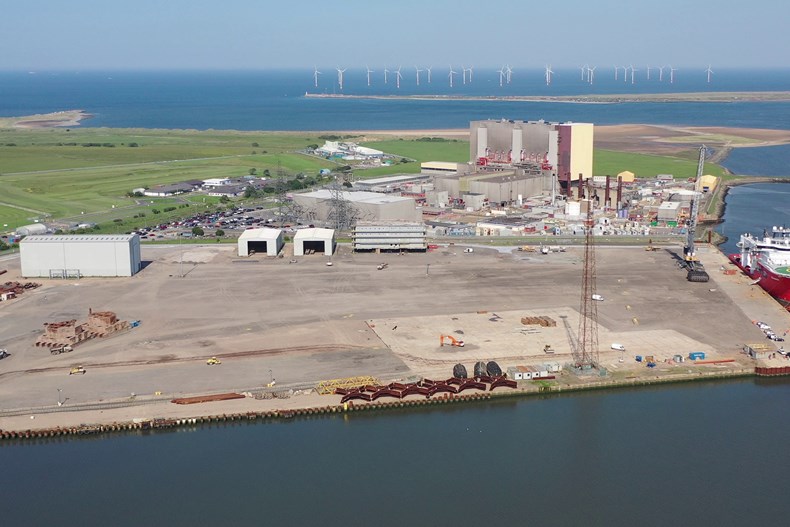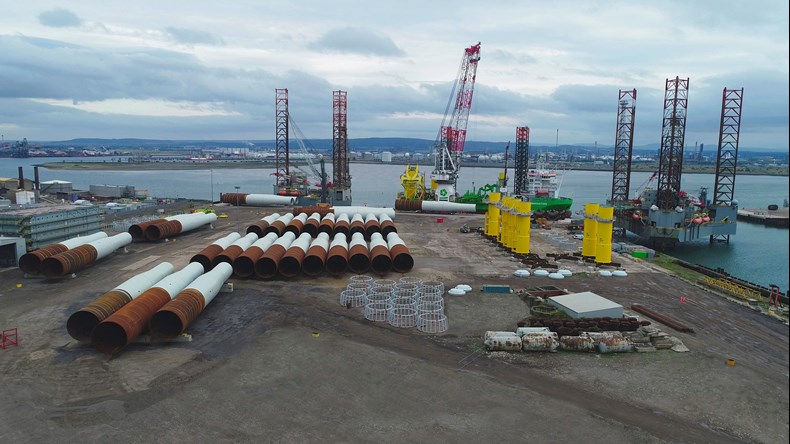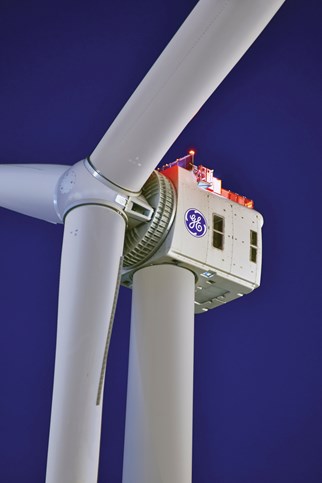World’s largest offshore wind farm powers jobs boost for North East England.
22 Sep 2020
SSE and joint venture partner Equinor’s Dogger Bank Wind Farm will bring 120 skilled jobs to the North East of England after confirming a deal with GE Renewable Energy will to supply the ground-breaking 13MW Haliade-X turbines for the development.
GE Renewable Energy has agreed a contract, subject to Dogger Bank A and B reaching Financial Close, to supply 190 of the turbines for the development 130km off the coast of England.
As part of the deal, GE Renewable Energy will establish marshalling harbour activities at Able Seaton Port in Hartlepool, creating 120 skilled jobs at the site during construction.
The port will serve as the base for turbine service equipment, installation and commissioning activities.
Component parts for each of the turbines will be delivered to the specialist site, where they’ll be pre-assembled before being taken out to the North Sea for installation.
Turbine installation is expected to commence in 2023 at Dogger Bank A.
This brings the total number of jobs in the North East associated with the development and operation of Dogger Bank Wind Farm to 320 so far. Recruitment activity is expected to begin in early 2021.

Turbine installation at Able Seaton Port near Hartlepool will lead to the creation of 120 skilled jobs at the port during construction.
Energy Minister Kwasi Kwarteng said: “I am thrilled to see so many green jobs on the way to the North East of England thanks to our world-leading offshore wind industry.
“Projects like Dogger Bank are absolutely crucial to building back greener from the coronavirus pandemic – creating jobs, growing the economy and tackling climate change. I look forward to watching its progress in the months and years ahead.”
Dogger Bank Wind Farm is a joint venture between SSE Renewables, who are leading the construction of the wind farm, and Equinor, who will operate the 3.6GW project during its lifetime of at least 25-years. The project is located over 130km off England’s north-east coast and will be capable of powering up to 4.5 UK million homes each year when complete in 2026. Due to its size and scale, the site is being built in three consecutive phases; Dogger Bank A, Dogger Bank B and Dogger Bank C. Each project is expected to generate around 6TWh of electricity annually.
It will be the first time a 13MW Haliade-X has been installed anywhere in the world. One spin of three 107m long blades can power a UK household for more than two days.

Steve Wilson, Dogger Bank Wind Farm’s Project Director at SSE Renewables, said: “Signing the contract with GE Renewable Energy is not just great news for Dogger Bank and GE, but for the wider offshore wind industry, marking the first time a 13MW turbine will be installed in the world.
“In addition to this, today’s announcement will bring huge economic benefits to the North East of England, where 120 skilled jobs will be created during construction of the windfarm, along with 120 skilled jobs during the maintenance phase.
“These turbines are a true testament of how hard the offshore wind industry is working to continually innovate and drive down costs and we look forward to working with GE Renewable Energy to help us deliver the largest offshore wind farm in the world.”
Halfdan Brustad, vice president for Dogger Bank at Equinor, said: “We want Dogger Bank to be a flagship project that leads the way in both digitalisation and innovative technology, so it is a great honour to confirm that this project will be the first in the world to use these powerful turbines.
“The sheer scale of Dogger Bank brings huge opportunities to the UK. As well as being home to the world’s largest offshore wind farm, the North East will benefit from hundreds of jobs and local supply chain opportunities. We look forward to working with our partners and suppliers to build up a skilled team in the area, to operate and maintain these turbines for the lifetime of the wind farm, from our new base which will be constructed at the Port of Tyne.”


